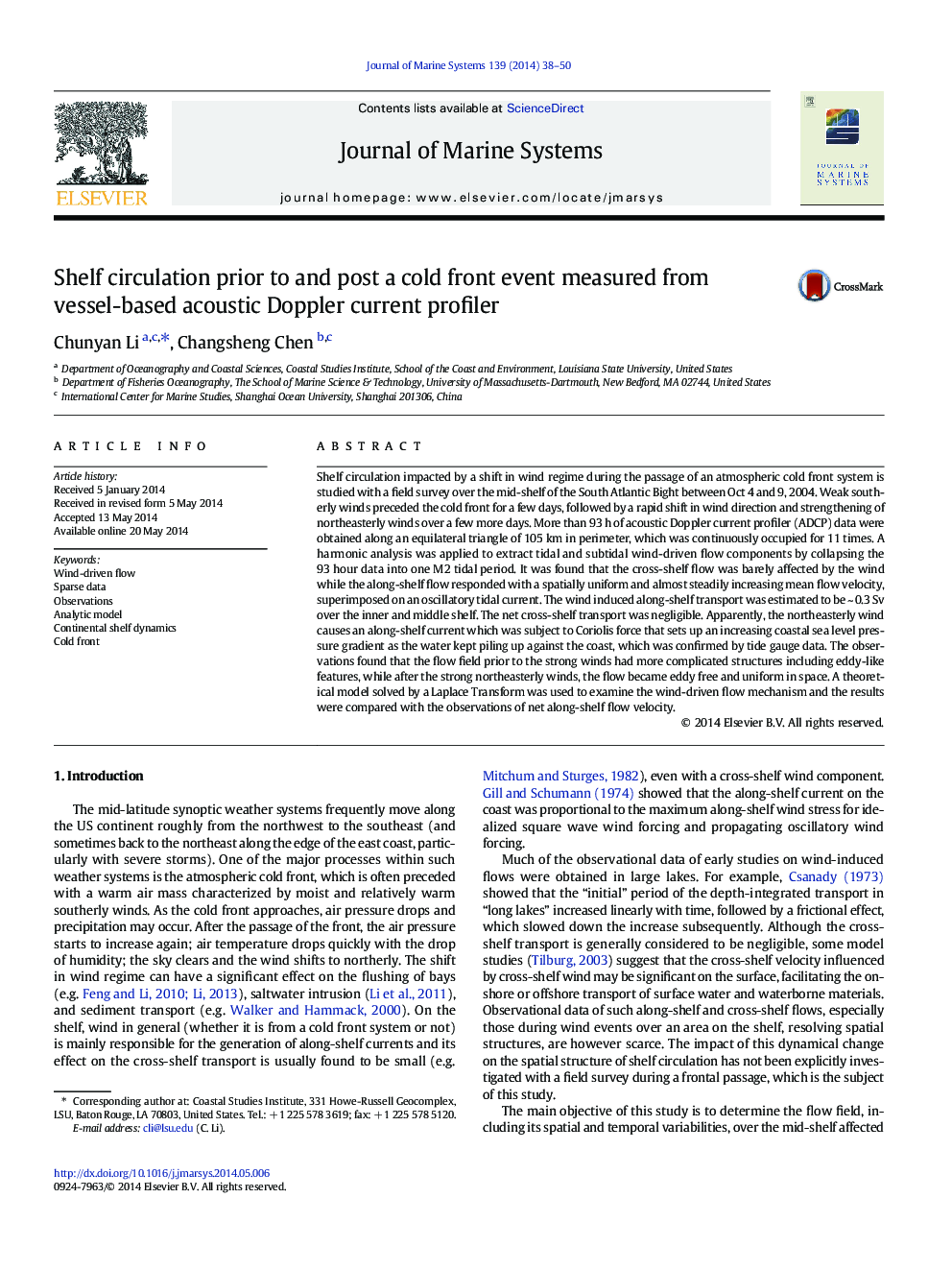| Article ID | Journal | Published Year | Pages | File Type |
|---|---|---|---|---|
| 6386902 | Journal of Marine Systems | 2014 | 13 Pages |
Abstract
Shelf circulation impacted by a shift in wind regime during the passage of an atmospheric cold front system is studied with a field survey over the mid-shelf of the South Atlantic Bight between Oct 4 and 9, 2004. Weak southerly winds preceded the cold front for a few days, followed by a rapid shift in wind direction and strengthening of northeasterly winds over a few more days. More than 93Â h of acoustic Doppler current profiler (ADCP) data were obtained along an equilateral triangle of 105Â km in perimeter, which was continuously occupied for 11 times. A harmonic analysis was applied to extract tidal and subtidal wind-driven flow components by collapsing the 93Â hour data into one M2 tidal period. It was found that the cross-shelf flow was barely affected by the wind while the along-shelf flow responded with a spatially uniform and almost steadily increasing mean flow velocity, superimposed on an oscillatory tidal current. The wind induced along-shelf transport was estimated to be ~Â 0.3Â Sv over the inner and middle shelf. The net cross-shelf transport was negligible. Apparently, the northeasterly wind causes an along-shelf current which was subject to Coriolis force that sets up an increasing coastal sea level pressure gradient as the water kept piling up against the coast, which was confirmed by tide gauge data. The observations found that the flow field prior to the strong winds had more complicated structures including eddy-like features, while after the strong northeasterly winds, the flow became eddy free and uniform in space. A theoretical model solved by a Laplace Transform was used to examine the wind-driven flow mechanism and the results were compared with the observations of net along-shelf flow velocity.
Related Topics
Physical Sciences and Engineering
Earth and Planetary Sciences
Oceanography
Authors
Chunyan Li, Changsheng Chen,
